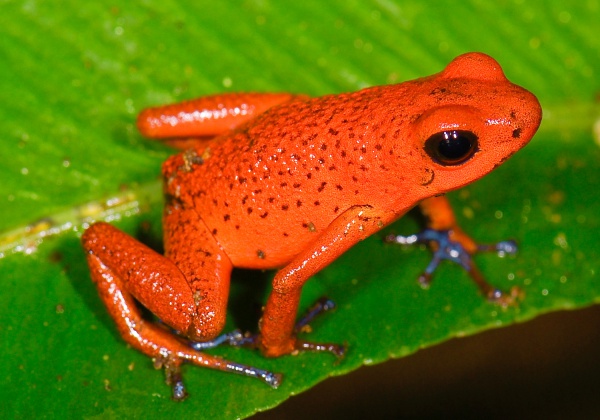Facts About Strawberry poison-dart frog
The strawberry poison frog, also known as the strawberry poison-dart frog, is a small yet captivating amphibian native to Central America. These vibrant creatures can be found from eastern central Nicaragua through Costa Rica to northwestern Panama. One of their most striking features is their remarkable variety of colors—there are approximately 15-30 different color morphs, each considered a distinct, true-breeding variety.
While not the most toxic frog in existence, the strawberry poison frog holds the title of being the most poisonous within its genus. Their diet primarily consists of mites and ants, which are highly concentrated with alkaloid toxins such as Pumiliotoxin 251D. This toxin can interfere with heart function and disrupt cell ion channels. The frogs expertly absorb these toxins from their prey, particularly from mites and formicine ants. Even the tadpoles benefit from a chemical defense boost, receiving alkaloids passed down by their mothers.
These frogs are diurnal creatures, often found scurrying about the leaf litter in both forests and disturbed areas. They exhibit an intriguing family dynamic, with both parents participating in the upbringing of their young. Males guard and hydrate the nests, while females provide their tadpoles with unfertilized eggs as a food source. Interestingly, females tend to invest more time and effort into parental care compared to males.
Regarding reproduction, these frogs are external breeders. Females choose their mates based on proximity rather than quality. After the eggs are laid, either parent will transport the tadpoles to water sources. These tadpoles subsist solely on unfertilized eggs until they metamorphose into little froglets.
In terms of classification, the strawberry poison frog belongs to the genus Oophaga. Evidence suggests that this genus has undergone recent speciation, potentially linked to the formation of the Panamanian land bridge during the Pliocene epoch. The species exhibits a remarkable range of colors and patterns, particularly among different isolated populations.
Due to their vibrant appearance and fascinating life cycle, strawberry poison frogs are quite popular in the pet trade. Although there have been issues with smuggling in the past, recent legal exports from Central America have made these frogs more accessible to enthusiasts.

 Costa Rica
Costa Rica